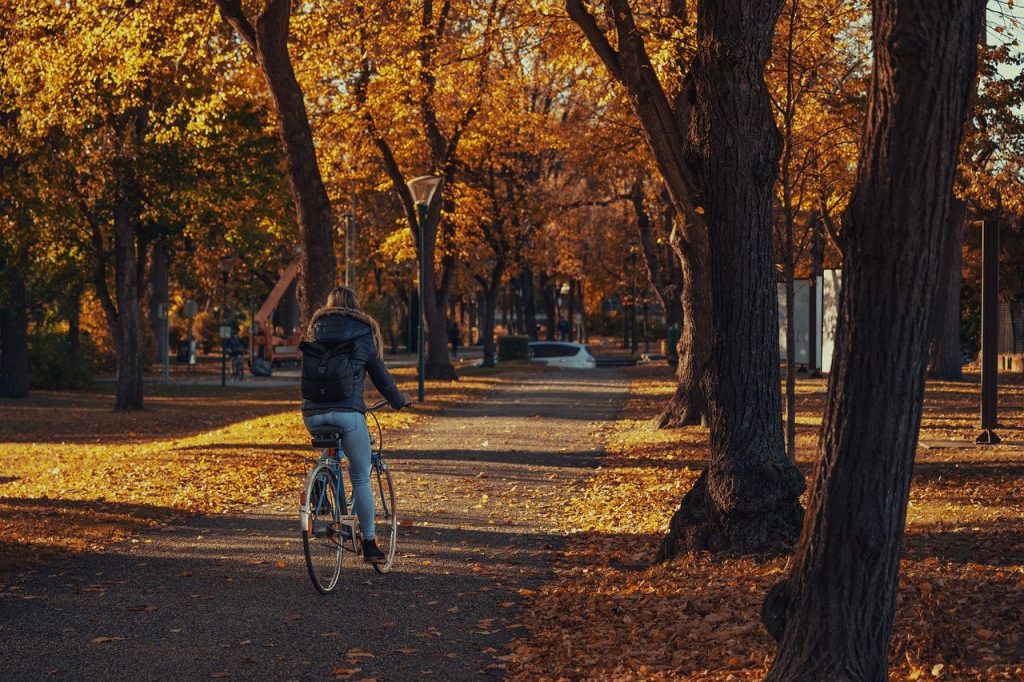
Fall is here
Finally, the end of September has come and we have passed the Fall Equinox. With it comes shorter days, and it means time to think about the change to cold weather bike commuting and mountain biking. For me, that really just means a change-up in the clothing and maybe bikes.
And when I start thinking about that, I’m also looking at how my commute is great and why more people can’t enjoy the same thing. There has to be more incentive to bike or walk to where we work or shop. One of the biggest problems is how, here in the US, we developed cities. Where you live is far away from where you work. That seems to be from the old idea of zones for work, industry, and living space. Back then, it made sense. Who would want to live next to a smog-belching factory? But another part of this has to do with shops. Small stores are long gone, replaced by giant grocery and corporate retail stores. If you have a local store, it is most likely a 7-11 or a gas station.
There is this idea of walkable cities. People should live within an easy 15-20 minute walk or bike to everything they need. I’m super lucky. Where my partner and I moved to, we have a grocery store, coffee shop and other places to eat within a 15-minute walk. It’s faster if I bike. But with the time to get the bike, ride over, lock it up and unlock it, it’s nearly the same amount of time to walk.
But since I only grocery shop once a week, I just drive. If I need a few things I might walk over. But the point is that if I didn’t have a car, like when I get old. I could still get to stuff I need.
But how to make that possible for a lot more people is a real challenge. The solution some have come across is updating zoning codes to allow for work, retail, and living to be much closer. But this has proven to be a challenge. The largeness of corporate retail prevents it. Not many large companies are willing to create small satellite stores. Amazon and Whole Foods have thought about it, but nothing has really emerged.
A major obstacle is that towns are made for cars. The most direct route to a store is a road. While a lot more cites have bike lanes, a lot fewer have dedicated bike paths. Bike paths are more encouraging to bike riders since the path removes a lot of the interactions with cars. Finding the green space to build more bike and pedestrian paths can be a huge challenge, especially in older neighborhoods. Newer builders have been trying to integrate those parks and paths into the design.
One of the biggest obstacles in Fort Collins is the right-of-way access near the railroads and the ditch systems. Much of those routes are off-limits because of liability issues. These all seem to be in the best places to connect people to shopping and work. Hmmm.
Progress has happened in the last 20 years. But that takes long-term planning and local leaders willing to keep up the work.